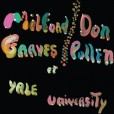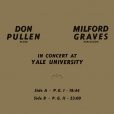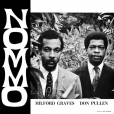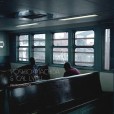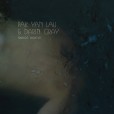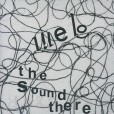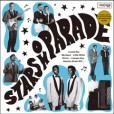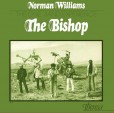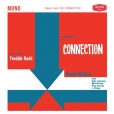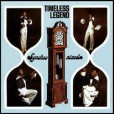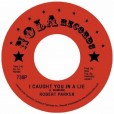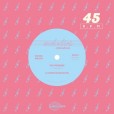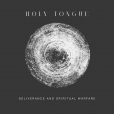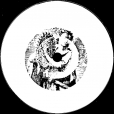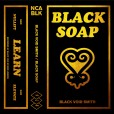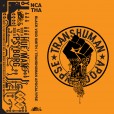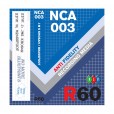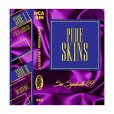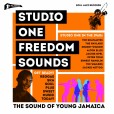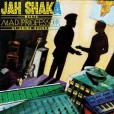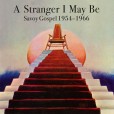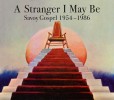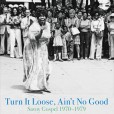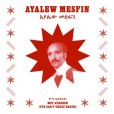Your basket is empty

Bringing together two of the most prized, auratic LPs in all of free music, with music as vital and challenging today as it was more than five decades ago.
In Concert At Yale University, Vol. 1 was self-released on the duo’s Self-Reliance Program imprint in 1966. Copies are impossibly rare, especially the first few, which sported hand-painted covers by the musicians. (Several of these are displayed in the CD gatefold, together with a terrific photo of the pair selling LPs at a Nation of Islam convention.)
It was followed by Nommo, the next year.
For a performance at Yale University in New Haven, Connecticut, in spring of 1966, percussionist Milford Graves invited pianist Don Pullen to play duets. The two musicians had worked together in a band fronted by saxophonist and clarinettist Giusseppi Logan, with whom they had recorded two LPs in 1965 for ESP. Graves was already a daunting presence in free music. One step at a time, he was busy transforming the role of drumming in jazz, introducing a new way of dealing with unmetered time and accomplishing this task with technique that was almost inconceivable. His experience playing timbales in Latin bands had been formative, suggesting that the snare could be used as accent rather than beat-keeper, but by the mid 60s he’d worked up a holistic approach to sound and energy that was the most radical of his improvising percussion contemporaries.
For his part, this early setting finds Pullen at his most hard-hitting, and his pianism here lays to rest any allegations of Cecil Taylorism.
A new imprint from the wonderful Okraina label out of Brussels!
These will be double-10”, in gorgeously designed gatefold sleeves, with full-size, eight-page booklets of photographs.
To start, lovely, unusual duets on five-string banjo and steel pan (also slit drums and gamelan). Flowing and meditative; open-air; enjoyably less arsey about folk, soulfulness and melody than much Improvisation. (When Jaki Liebezeit renounced Free Jazz, he said it had too many rules.) For the label it evokes Laraaji and Bill Orcutt.
Check it out!
The basis of these works is a set of scintillating, widescreen improvisations by the Brussels-based pianist Pak Yan Lau (prepared piano, toy pianos, synth, objects and electronics) and Darin Gray (bass, preparations, objects and electronics), who has played alongside Jim O’Rourke for twenty years.
Over time Pak Yan added, layered, twisted, subtracted… including a recording of the underground tram in Albert, Brussels, for example. “I frequent this station all the time,” she says, ‘because my daughter goes to kindergarten there. One day there was an electricity problem, the whole station was humming, beautiful overtones coming out.”
“I liked the contrast between trudge (meaning you kind of move forward with difficulty and obstacles on your feet) and lightly (even in that situation doing it gracefully and lightly). The music on this record has that light/dark–ness.”
‘Mesmerising, fresh, inventive and intense,’ writes Stef Gijssels for The Free Jazz Collective.
Some words from Dynamo Dreesen…
“Have you ever heard of the Eva EP by Web on Fat Cat Records? A few years ago it was my introduction to Web. I knew Fat Cat Records was interesting and diverse, they were known for releasing mainly experimental electronica and psychedelic folk music. The Eva EP by Web was Fat Cat’s start with their label mission from their record shop in central London in 1996. This EP has it all for me! A fusion of jazzy, bouncy, cosmic balearic, warped synth techno.
“Takuya Sugimoto aka Web while an art student in Osaka around 1993 began recording Detroit Techno, Chicago House, Electro and Electronica. He was helped by Ken Inaoka of Syzygy records, one of the first independent techno record labels in Japan, by releasing his first productions. Takuya then continued to release under several aliases, such as COLOGNe, Dja-zz, Gana, Ura Ura and Sammansa.
“While in Japan in 2019, on a 12 day Dresvn tour I was curious to know what had happened to Web. I asked Saito of Newtone Records in Osaka if he knew anything of him?
“Magically a month later Takuya sent me 16 unreleased tracks produced in 1994/95 stored on dat cassettes and forgotten about until now. Of those 16 tracks, eight became The Sound There.”
A 1976 recording by this mainstay of the San Francisco jazz scene across the decades, who played with everyone from Sonny Stitt to Pharoah Sanders.
A message from Eddie Henderson…
‘It’s time. It’s time for all to hear the Bishop proclaim spiritual truths in his church, the One Mind Temple, dedicated to the spirit of John Coltrane. The time is also overdue for all to hear the Bishop proclaim musical truths through the medium of his alto saxophone. My first few gigs in 1962 were with the Bishop’s band. I’ll never forget what an inspiration it was for me learning how to play while standing next to the Bishop, who already had it together. I’m sure after hearing the Bishop, you will also agree that his time has come.’
Two contrasting, bolshie, try-a-thing dubs, bristling with ideas and energy.
‘Ambulance Dub creeps along like John Carpenter laying down a dubplate special at Firehouse. The Bigger Tutti is full-on, punky-reggae-party steppers.’
Hand-stamped.
The first of three volumes surveying surely the mightiest Gospel label of them all.
Stomping, rollicking gospel music, intermingling with raw soul, searing blues, hard-rocking doo-wop and jazz, and storming r&b.
Infused and incandescent with the hurting, surging indignation of the Civil Rights movement, here are twenty-four precious scorchers by giants like the Staple Singers and Jimmy Scott, alongside devastating sides by less celebrated names like the Harmonising Five of Burlington, North Carolina, and teen-group the North Philadelphia Juniors, culminating triumphantly with slamming, sanctified versions of Hit The Road Jack and Wade In The Water. Drawn from nigh-impossible-to-find 78s, sevens and LPs, hardly any of these recordings have been reissued since their first release.
Presented in a gatefold sleeve, with full-size booklet; beautifully designed, with stunning, rare photographs and original Savoy artwork. Sound restoration and mastering at Abbey Road; pressed at Pallas.
Co-curated by Greg Belson, compiler of Divine Disco; with deep, extensive notes by Robert Marovich, author of A City Called Heaven: Chicago and the Birth of Gospel Music (University of Illinois), and host of the award-winning radio show Gospel Memories.
An extensive, sumptuous survey of surely the mightiest Gospel label of them all.
Sixty-one gems of stomping, rollicking, desolate, ravishing gospel music, intermingling with soul, blues, doo-wop, jazz, r&b, disco and boogie.
Presented as a sixty-page mini-book, with CDs suspended in card sleeves; perfect-bound, exorbitantly expensive to produce, lovely.
Seventeen gems of fierce funk, rapturous soul and transcendent disco and boogie, super-charged with celebration and affirmativeness, loaded with roaring choirs, rocking horns and popping bass guitars, from the years leading up to Savoy’s acquisition by Malaco.
The second of three volumes presents sublime crossings of gospel with the soul, funk and jazz of the Black Power era. Twenty cuts dot dazzlingly between Muscle Shoals soul, screwed breakbeat, Mizells-style fusion, disco and proto-house. Triumphant re-workings of Sly Stone, Donny Hathaway and Herbie Hancock’s Head Hunters will have listeners throwing their pew cushions into the air.
